If you're looking to naturally manage your blood sugar, consider a herbal tea blend. Ingredients like cinnamon, fenugreek, and ginger work together to improve insulin sensitivity and control spikes in blood sugar. Brewing a blend with equal parts of these herbs is easy—just combine, steep at 200°F for 5-10 minutes, and enjoy. Aim for one to three cups daily, ideally paired with meals to maximize benefits. Plus, storing your herbs properly keeps them effective. There's plenty more to discover about crafting the perfect blend for your health, so keep exploring these delightful options!
Benefits of Herbal Tea for Blood Sugar
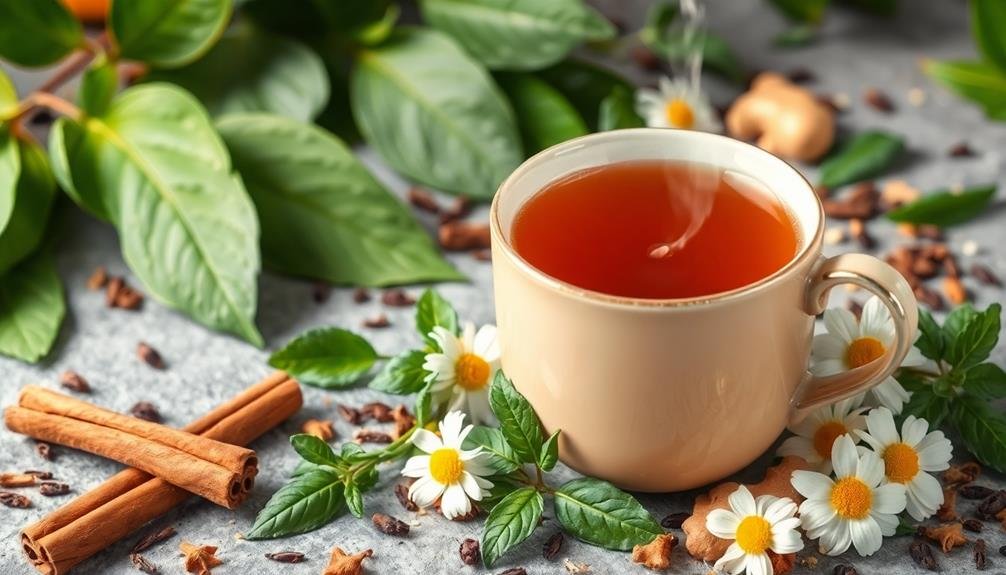
Drinking herbal tea can be a simple yet effective way to help manage blood sugar levels. When you incorporate herbal teas into your daily routine, you may notice several benefits that support your overall health. These teas often contain natural compounds that can improve insulin sensitivity, making it easier for your body to regulate glucose levels.
Additionally, herbal tea can help you stay hydrated, which is essential for maintaining healthy blood sugar levels. Proper hydration supports kidney function, helping your body filter out excess sugar.
You might also find that these teas provide a soothing ritual, reducing stress and promoting relaxation. Stress can negatively impact blood sugar control, so taking time for yourself can be beneficial.
Moreover, many herbal teas are low in calories and sugar, making them an excellent choice for those looking to manage their weight. By replacing sugary beverages with herbal tea, you can help prevent spikes in blood sugar.
Key Ingredients for a Balancing Blend
When creating a herbal tea blend for blood sugar control, it's important to include key ingredients known for their balancing properties.
These natural elements can help maintain stable blood sugar levels and support overall health. Here are five essential ingredients to reflect upon:
- Cinnamon: This spice helps improve insulin sensitivity and can lower blood sugar levels.
- Fenugreek: Rich in soluble fiber, fenugreek aids in controlling blood sugar spikes after meals.
- Ginger: Known for its anti-inflammatory properties, ginger can enhance insulin sensitivity and regulate blood sugar.
- Dandelion Root: This ingredient supports liver function and may help control blood sugar levels by promoting digestion.
- Bitter Melon: Often used in traditional medicine, bitter melon is believed to mimic insulin and improve glucose uptake.
Step-by-Step Tea Blending Process
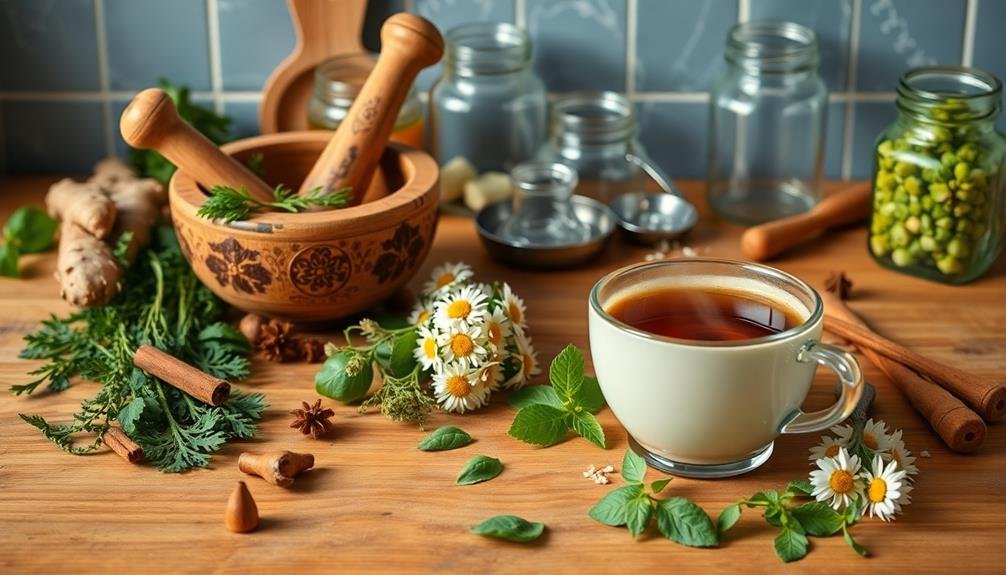
To create your herbal tea blend for blood sugar control, start by gathering all your key ingredients and tools.
You'll need dried herbs like cinnamon, fenugreek, and bilberry, along with a mixing bowl, measuring spoons, and an airtight container for storage.
Next, measure out equal parts of each herb based on your personal taste preferences. For a balanced blend, try using one tablespoon of each ingredient. This ratio allows the flavors to complement each other while harnessing their individual benefits for blood sugar regulation.
Once you've measured the herbs, combine them in the mixing bowl. Use a spoon to mix the ingredients thoroughly, ensuring even distribution.
If you want to enhance the flavor, consider adding dried citrus peels or ginger.
After mixing, transfer your blend to the airtight container. Label it with the date and ingredients for easy reference later.
Store it in a cool, dark place to keep the flavors and properties intact.
Brewing Techniques for Maximum Efficacy
After you've created your herbal tea blend, the next step is brewing it for best benefits. Proper brewing techniques can enhance the effectiveness of your blend, ensuring you extract all the beneficial properties.
Here are some key tips to help you brew your tea correctly:
- Use fresh water: Fresh, filtered water retains the natural flavors and nutrients better than tap water.
- Temperature matters: Different herbs require different temperatures. For most herbal teas, 200°F (93°C) is ideal.
- Steep time: Allow your tea to steep for 5-10 minutes, depending on the herbs used. This helps release their active compounds.
- Cover your brew: While steeping, cover your teapot or cup to retain heat and volatile oils.
- Taste and adjust: Experiment with steep times and herb ratios to find your perfect flavor and potency.
Tips for Daily Consumption and Storage
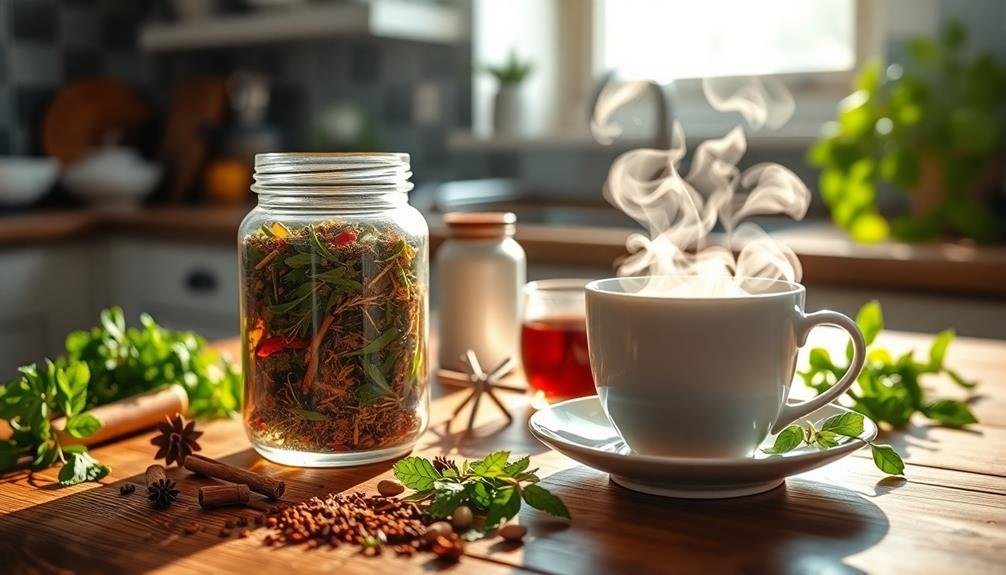
Incorporating herbal tea into your daily routine can be a simple yet effective way to support blood sugar control. To make the most of your herbal tea blend, aim to drink one to three cups a day. Choose a consistent time, like morning or afternoon, to create a habit. It helps to pair your tea with meals or snacks, as this can enhance its benefits.
When it comes to storage, keep your herbal tea in a cool, dark place. Use an airtight container to protect it from moisture and light, which can degrade the herbs. If you make a large batch, store any unused tea in the fridge for up to a week. Just remember to reheat it gently to preserve its properties.
If you're on-the-go, consider brewing a cup in a travel mug. This way, you'll have your herbal tea handy wherever you are.
Frequently Asked Questions
Can Herbal Tea Replace Medication for Blood Sugar Control?
You can't rely solely on herbal tea to replace medication for blood sugar control. While it may support your health, always consult your healthcare provider before making any changes to your treatment plan.
Are There Any Side Effects of Herbal Tea Blends?
Yes, herbal tea blends can have side effects. You might experience allergies, digestive issues, or interactions with medications. It's crucial to consult a healthcare professional before trying new herbal teas to guarantee your safety and well-being.
How Often Should I Drink Herbal Tea for Effectiveness?
You should drink herbal tea daily for the best results. Aim for two to three cups spread throughout the day. This way, you'll maintain consistent benefits and enjoy a soothing routine in your life.
Can I Add Sweeteners to My Herbal Tea?
Yes, you can add sweeteners to your herbal tea. Just remember, if you're aiming for health benefits, it's best to choose natural options like honey or stevia instead of refined sugars. Enjoy your tea!
Is There a Specific Time of Day to Drink Herbal Tea?
You can enjoy herbal tea at any time of day, but it's best to sip it in the morning for energy or in the evening for relaxation. Listen to your body and choose what feels right.
In Summary
Incorporating a herbal tea blend into your daily routine can be a simple yet effective way to support natural blood sugar control. By choosing the right ingredients and using proper brewing techniques, you can maximize the benefits of your tea. Remember to store your blend correctly and enjoy it regularly for the best results. With a little effort, you can make this delicious beverage a powerful ally in maintaining balanced blood sugar levels. Cheers to your health!

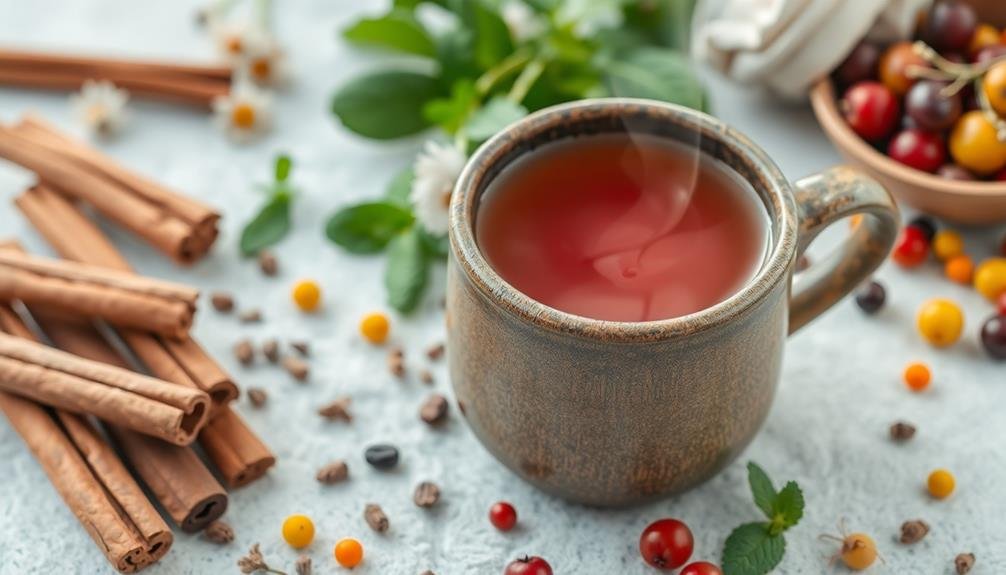
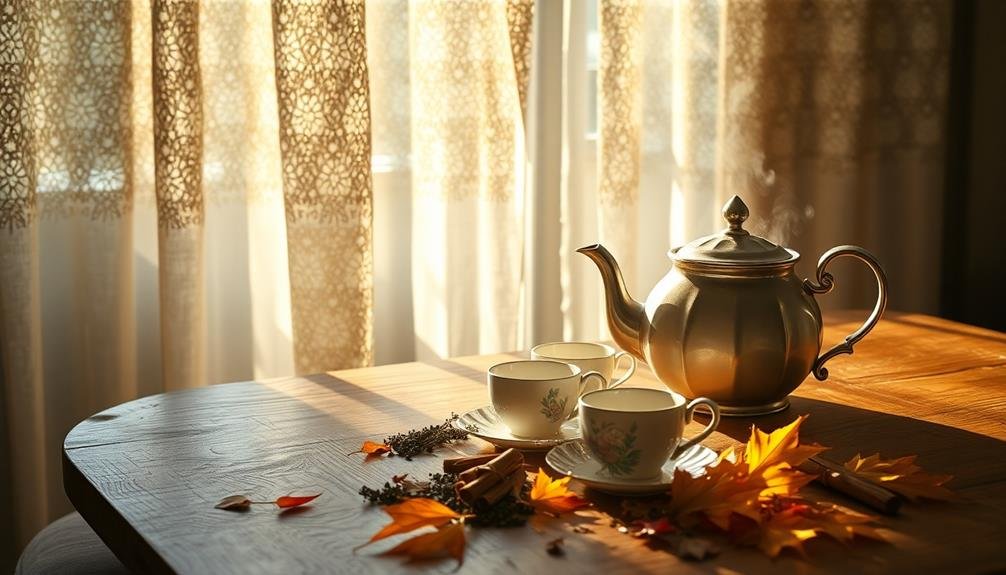
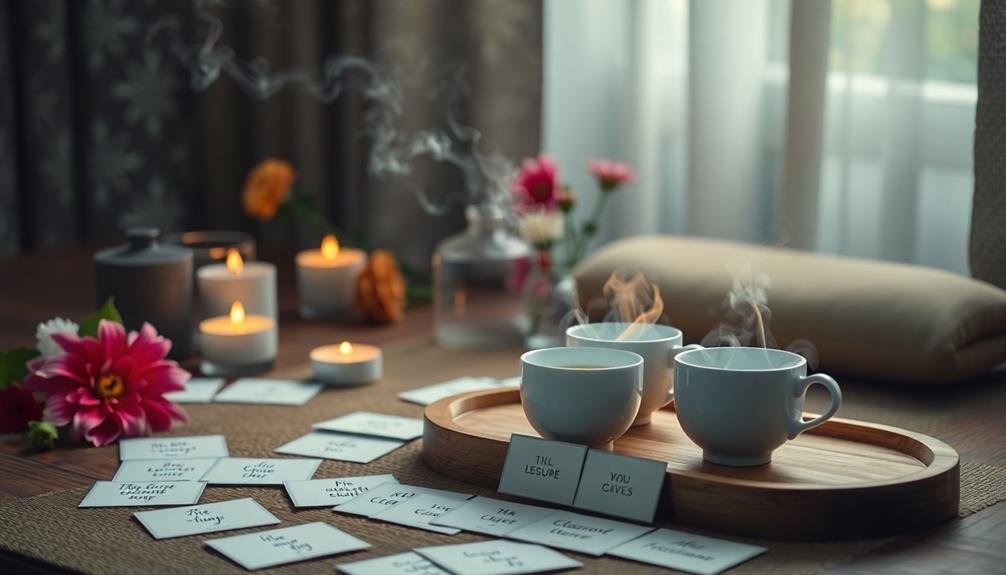
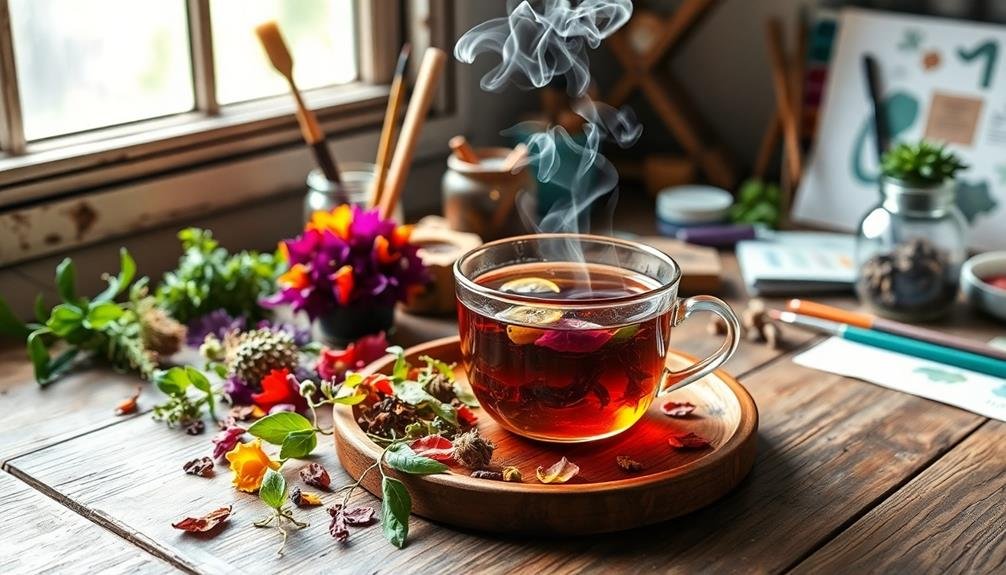
Leave a Reply